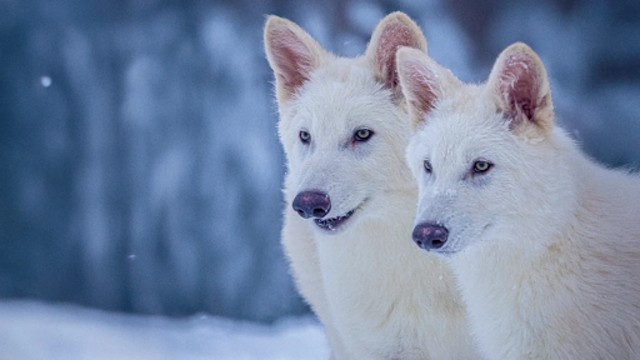
Here are two of the three wolves scientists edited to look like dire wolves, a species that disappeared around 12,500 years ago. CNN
A species of wolf that disappeared around 12,500 years ago is now alive again. Scientists have brought back the dire wolf, making it the first animal to be successfully "de-extincted." A biotech company from Dallas announced this surprising achievement.
They created three dire wolf puppies by using ancient DNA. The team took DNA from a 13,000-year-old tooth and a 72,000-year-old skull. They then used cloning and gene-editing technology to turn gray wolf cells into something much closer to dire wolves. Gray wolves are the closest living relatives of dire wolves.
The scientists changed 14 genes with 20 edits to match dire wolf traits like thick fur and white coats. They then cloned the best cells and placed them into dog eggs. Large mixed-breed dogs carried the pregnancies. Two male pups were born on October 1, 2024, and a female was born on January 30, 2025.
The dire wolves now live in a safe and secret 2,000-acre site. This area is protected with high fences, drones, cameras, and security guards. The site has government approval and follows strict animal safety rules.
Dire wolves were once top hunters in North America. They were bigger than gray wolves, with strong jaws and thick fur. They even inspired the scary wolves in the TV series “Game of Thrones.”
Two of the dire wolf pups were born on October 1, 2024, the company said. CNN
Scientists used fossils to build the dire wolf’s full genetic map. They compared it with modern wolves, foxes, and jackals to find the unique traits. Then they used a special tool called CRISPR to edit gray wolf genes. This helped them give the pups the look and features of real dire wolves.
Experts say these animals are mostly gray wolves with a few important changes. The pups share 99.9% of their genes with gray wolves. Some scientists say more gene changes may be needed to call them true dire wolves. Others believe the pups already look and behave like dire wolves, which is a big step.
The scientist team behind this says the pups are healthy and look exactly like dire wolves from thousands of years ago. Even though they are hybrids, many experts call this a huge leap in science.
This project is part of a larger mission to bring back extinct animals like the woolly mammoth, dodo, and Tasmanian tiger. The company hopes to see mammoth calves by 2028. It has already raised over $435 million to support its work.
Alongside the dire wolves, scientists have also cloned red wolves—an endangered species—using techniques learned from this project. These new methods are said to be safer and less harmful to the animals involved.
Still, some people worry. Critics argue that spending millions on extinct animals may not be the best use of resources. Others fear it could hurt animals used as surrogates.
However, experts say the company seems to care about animal welfare. One professor says it's unclear if dire wolves can live in the wild again. But he adds that the company took care to avoid risky gene changes.















